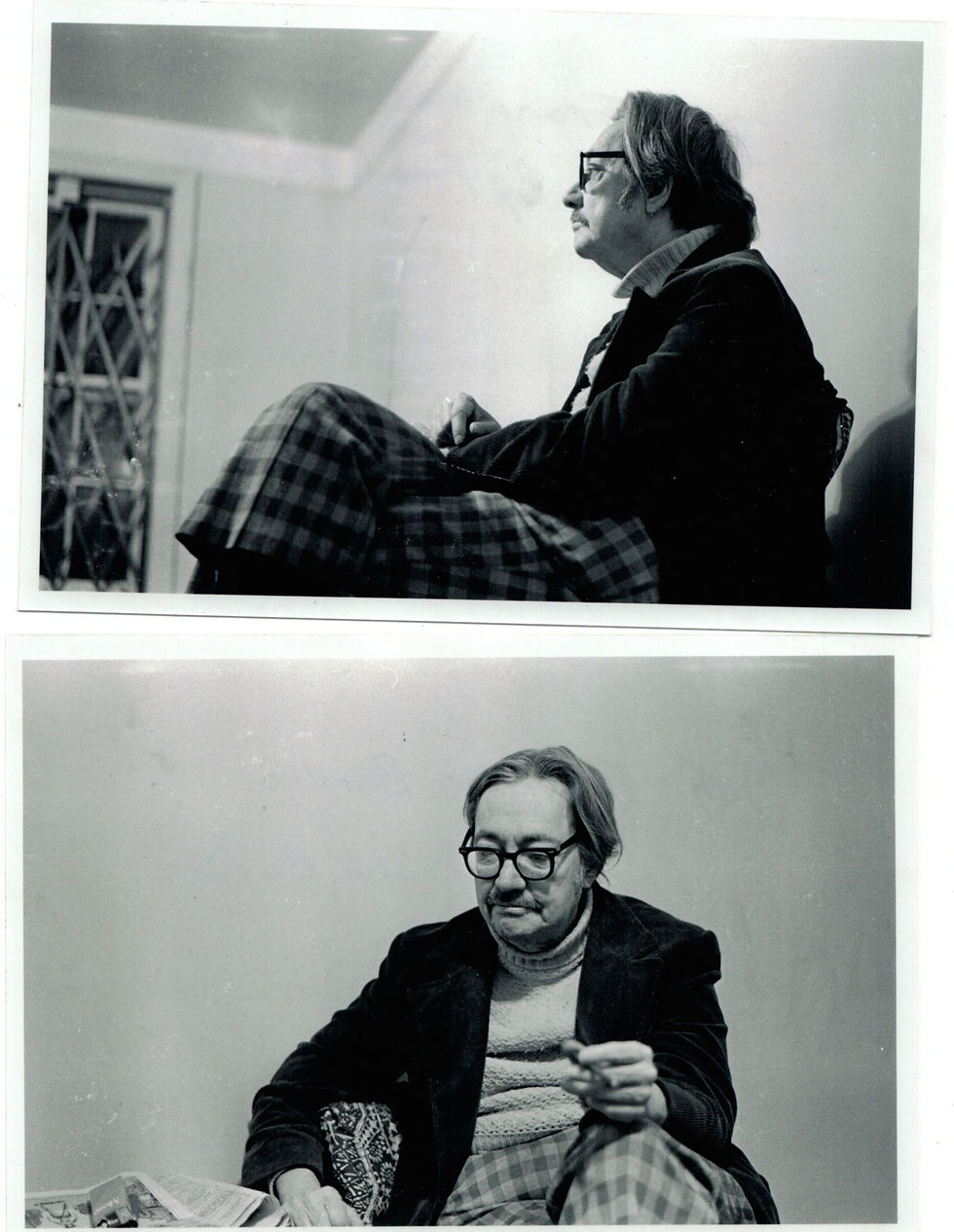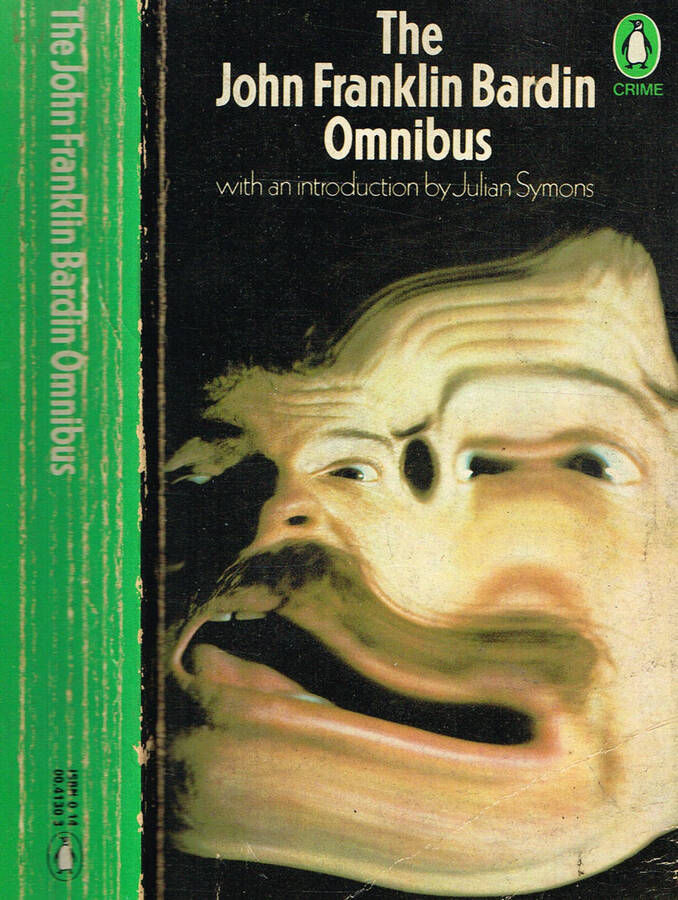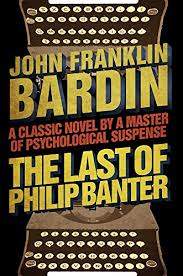
When we think about crime writers, our minds instantly fly to names such as Agatha Christie, Raymond Chandler, Arthur Conan Doyle, and Dashiell Hammett. I have yet to meet anyone who thinks of John Franklin Bardin. And, I am also yet to find an author who can write such hair-raising, psychologically thrilling books. The Deadly Percheron will forever remain my favourite book; The Last of Philip Banter has a master plot and; Devil Take the blue-Tail Fly is a study in itself. There is, and never will be, another book like it.
On November 30th, 1916, John Franklin Bardin was born in Cincinnati, Ohio. His mother, the daughter of a groom, had moved to Cincinnati to pursue an office job, and his father was a well-respected coal merchant. During his childhood, Bardin suffered many loses: his older sister died of septicemia and, almost a year later, his father succumbed to a coronary, leaving little to no money for his surviving family. Because of this, Bardin was forced to put his studies of only a year at the University of Cincinnati on hold (where he was studying engineering) and took up a full-time job as a ticket-taker and bouncer at a roller-skating rink. However, determined to continue his education, he simultaneously took up a job as a night clerk at a bookshop where he “self-educated” himself through reading.
Before he turned 30, Bardin moved to New York City where he had a selection of jobs: working in the advertisement department of a bank; as a bench hand in a valve foundry; in the production department of an advertising agency; and doing freelance research for Barron Collier. After this, in 1944, he began working for the ad agency Edwin Bird Wilson, Inc.

“Mother had become a paranoid schizophrenic by then. It was on visits to her that I first had an insight into the ‘going home’ hallucinations," wrote Bardin, when he was a teenager. It was from such early and intimate experiences with mental illness that helped frame his third and most brilliant novel, Devil Take the Blue-Tail Fly. From 1946 to 1948, Franklin Bardin embarked on an intense creative period, producing his three best-known works: The Deadly Percheron, The Last of Philip Banter, and Devil Take the Blue-tail Fly. These books were published over the course of 18 months. However, one of the was not published in the United States until the 1960’s.
By 1963, he had risen to the position of vice president and director at Edwin Bird. The same year, he left to continue his teaching of creative writing and advertisement at the New School for Social Research, something which he had begun two years earlier. In 1966, he was the associate publicity director for the United Negro College Fund; in 1967 to 1968 he wrote for the United Jewish Appeal; and finally, in 1972, he turned his mind to magazines and served as editor for the Coronet.
For the next two years, Bardin lived in Chicago, Illinois, serving as managing editor for the American Medical Association magazine, Today’s Health, and then for Learning and the Law and Barrister (two American Bar Association Press magazines).
On the official John Franklin Bardin website, it states that he returned to New York in 1974. However, other sources state that he stayed in Chicago until 1978.
Having lived in New York City’s East Village, John franklin Bardin died on July 9th, 1981, at the age of 64 at Beth Israel Medical Centre in Manhattan, New York. He was married twice, having a son (Julian A. Bardin, a.k.a. Julian Aycock to whom his estate was left) from his first marriage. He was survived by his second wife, Phyllida.

For an unfathomable reason, Bardin’s three most acclaimed works met with very little success in America when they were first published. However, they found renewed interest in British readers during the 1970’s. The well-known crime writer, Julian Symons, brought these three books together in the John Franklin Bardin Omnibus (published by Penguin books in 1976). Franklin Bardin readily and eagerly agreed to this republication.
It was a few years prior to the republication of these books – at the Crime Writers’ Association dinner, to be exact – that Symons first had the idea of collectively bringing these stories together. Denis Healey, the former Chancellor of the Exchequer and the guest of honour at that dinner, specifically praised the works of Bardin during his speech. However, only a dozen or so out of the one hundred and fifty invited guests had heard of him; with a few English enthusiasts, The Deadly Percheron has been the only book to have had considerable success. It is therefore not surprising that Symons had considerable trouble finding Badin, the novelist having disappeared from literary life. Neither his agents nor publishers had heard from him for a number of years, or even knew whether or not he was still living. With a “Quest for Bardin” newspaper campaign, he was eventually found through the Third Degree (the journal of the Mystery Writers of America), living in Chicago, alive and well.
In his introduction to the Bardin omnibus, Symons writes:
“They are all distinguished by an extraordinary intensity of feeling, and by an absorption in morbid intensity remarkable for the period....He belongs not to the world of Agatha Christie and John Dickson Carr, but to that of Patricia Highsmith or even that of Poe. The mental agonies of the heroes and heroines communicate a distress that makes the reader feel uncomfortable. Are they going mad, as they fear, or is there some reasonable explanation for the terrible things happening?”
He continues at the end:
“The novels sprang out from nightmare experiences, and it does not seem likely that Bardin will be impelled to write anything like them again....The first two (Deadly Percheron, and Philip Banter) are erratic and exotic, but they are never plodding or dull, and Devil Take the Blue-Tail Fly is the most convincing and frightening psychological crime story ever written.”
It was through Julian Symons that the great works of John Franklin Bardin are known by the wide public today. To him, all Franklin Bardin enthusiasts give their thanks.

The Works of John Franklin Bardin:
Throughout his life, Bardin wrote ten novels in total, five under his own name and the rest under the pseudonyms Gregory Tree and Douglas Ashe. See below a list of his works, the first three of which have blurbs.
Jacob Blunt is a rich, attractive, young Manhattanite who is personally acquainted with several leprechauns. He desperately hopes that he is mad, and that his new 'friends' are hallucinations. At least that would be an explanation. Seeking help, he enters the offices of Dr. George Matthews, a distinguished psychiatrist, but his bizarre yet strangely sane confession intrigues the doctor. Dr. Matthews' professional curiosity carries him one step too far. Plunged into a cataclysmic and surreal whirlpool of intimidation and murder, he loses every last vestige of normality, and has to fight to stay alive long enough to identify his persecutor.
The Case Against Myself (as Gregory Tree)
The Burning Glass
The Case Against Butterfly (as Gregory Tree)
A Shroud for Grandmama (as Douglas Ash in the U.S. and Gregory Tree in the U.K.)
So Young to Die (as Gregory Tree)
Christmas Comes But Once a Year
Purloining Tiny








Comments